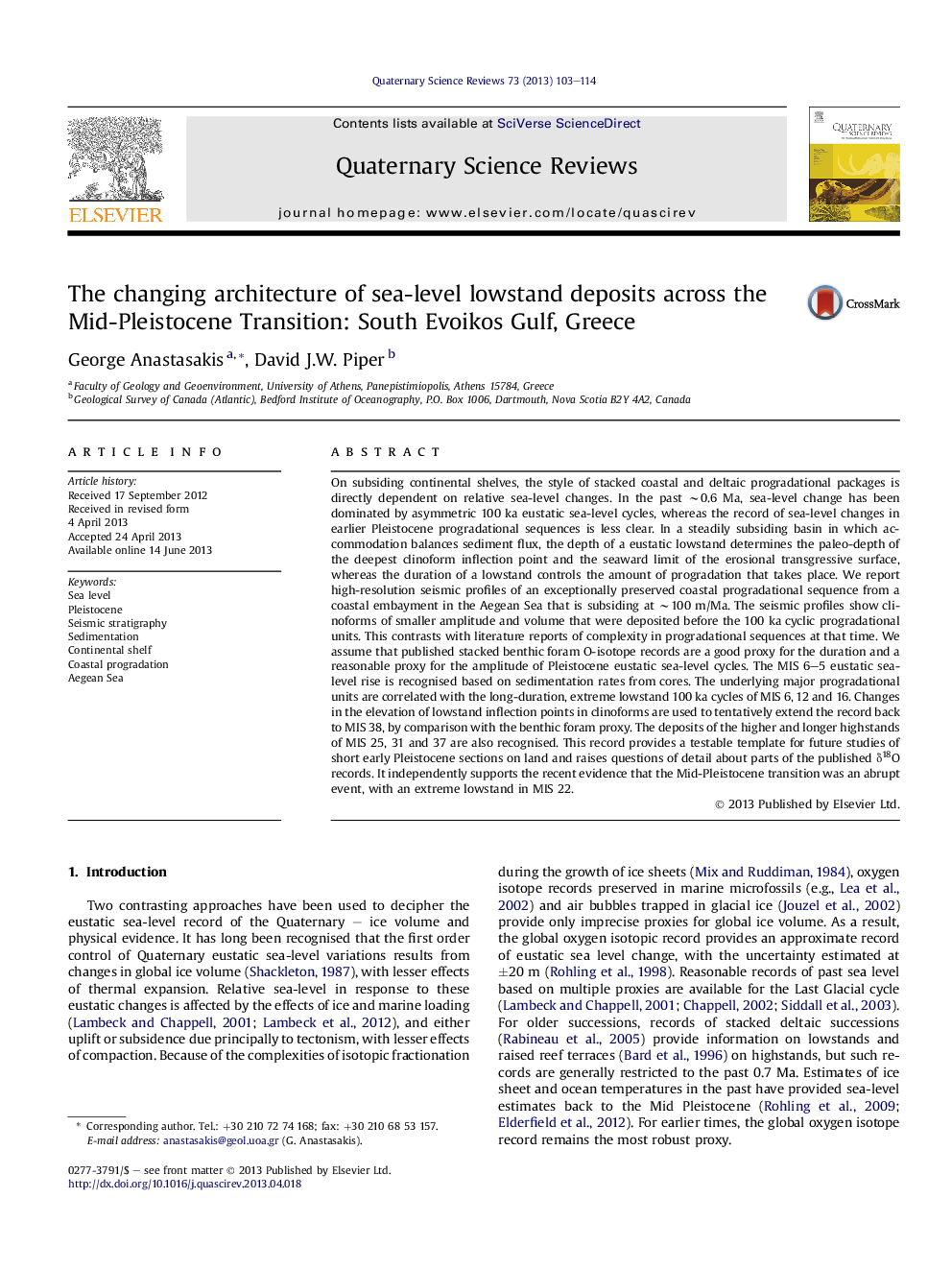| کد مقاله | کد نشریه | سال انتشار | مقاله انگلیسی | نسخه تمام متن |
|---|---|---|---|---|
| 4736785 | 1640861 | 2013 | 12 صفحه PDF | دانلود رایگان |

• We report seismic profiles resolving 1.2 Ma of coastal progradational cycles.
• Varying clinoform height and lowstand elevations are identified back to MIS 38.
• Before the 100 ka cycles, clinoform packets show smaller amplitude and volume.
• MIS 22 was the oldest very low lowstand, confirming recent isotope studies.
On subsiding continental shelves, the style of stacked coastal and deltaic progradational packages is directly dependent on relative sea-level changes. In the past ∼0.6 Ma, sea-level change has been dominated by asymmetric 100 ka eustatic sea-level cycles, whereas the record of sea-level changes in earlier Pleistocene progradational sequences is less clear. In a steadily subsiding basin in which accommodation balances sediment flux, the depth of a eustatic lowstand determines the paleo-depth of the deepest clinoform inflection point and the seaward limit of the erosional transgressive surface, whereas the duration of a lowstand controls the amount of progradation that takes place. We report high-resolution seismic profiles of an exceptionally preserved coastal progradational sequence from a coastal embayment in the Aegean Sea that is subsiding at ∼100 m/Ma. The seismic profiles show clinoforms of smaller amplitude and volume that were deposited before the 100 ka cyclic progradational units. This contrasts with literature reports of complexity in progradational sequences at that time. We assume that published stacked benthic foram O-isotope records are a good proxy for the duration and a reasonable proxy for the amplitude of Pleistocene eustatic sea-level cycles. The MIS 6–5 eustatic sea-level rise is recognised based on sedimentation rates from cores. The underlying major progradational units are correlated with the long-duration, extreme lowstand 100 ka cycles of MIS 6, 12 and 16. Changes in the elevation of lowstand inflection points in clinoforms are used to tentatively extend the record back to MIS 38, by comparison with the benthic foram proxy. The deposits of the higher and longer highstands of MIS 25, 31 and 37 are also recognised. This record provides a testable template for future studies of short early Pleistocene sections on land and raises questions of detail about parts of the published δ18O records. It independently supports the recent evidence that the Mid-Pleistocene transition was an abrupt event, with an extreme lowstand in MIS 22.
Journal: Quaternary Science Reviews - Volume 73, 1 August 2013, Pages 103–114